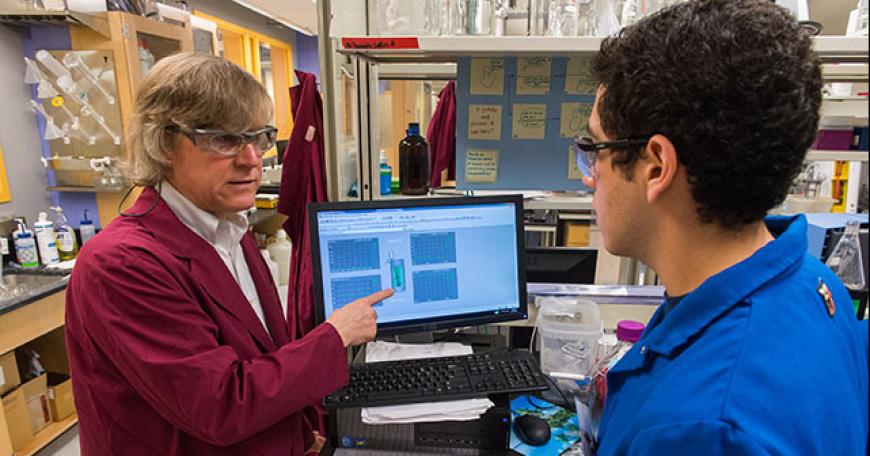Active Learning in a Blended Lab: 10.28L

Need for 10.28L
10.28, Chemical-Biological Engineering Lab, is an intensive 15 hour per week course given in the fall involving 8 hours of laboratory and 7 hours of lecture/recitation/homework. The steep time commitment frequently precludes students’ involvement in other academics.
The spring version, 10.28L, is designed to ease student lab hours, freeing them to take other courses. This is accomplished through a week-long intensive lab during IAP and a blend of in-person and remotely monitored lab experiments during the semester.
Remote Monitoring, Distributed Lab Work
Although in 10.28L students spend less time in the lab in the spring version of the course, they maintain the same level of involvement as in 10.28, and the two courses are equivalent. This is achieved through remote monitoring of lab experiments that span several days. The hands-on lab work is distributed so that a sub-group of the class manages the experiment for each day of a multi-day day experiment. Similar to industry where workers do not choose their teams, Instructor Jean-François Hamel assigns students to teams as heterogeneously as possible, equally distributing experience, skill set, major, and class rank.
In a typical experiment, the ‘Monday’ team gets started, takes notes and records data. The class uses an online shared lab notebook where all experimental data is displayed in real time, making it possible for other teams to remain apprised of the progress of the experiment. The ‘Monday’ team hands off management of the experiment to the ‘Tuesday’ team, and so on throughout the week.
Students Challenged to Think Critically
When running experiments in 10.28L, students are challenged to respond to fluctuations in their experiment, such as foaming, pressure, and chemical imbalances. Because the experiment is monitored online in real time, all students can see the fluctuations, not just the team who is in the lab that day. Students use a forum to discuss various possible steps to take to bring the system back into balance.
Because it is critical for the online data to be reliable and accessible at all times, Dr. Hamel uses state-of-the-art equipment, loaned or given by industry partners. Partnerships with industry often extend to on-site visits for the students, including opportunities for students to participate in real life problem solving.
In a “blended lab” such as 10.28L, although students spend less time in hands-on activities in the lab during the Spring term, they are more deeply involved in all aspects of complex experiments: monitoring remotely and learning along with their peers.

